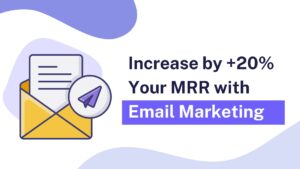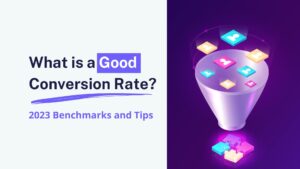Have you ever wondered how some B2B SaaS companies seem to grow exponentially while others struggle to gain traction? The answer lies in the effectiveness of their growth strategies. In this comprehensive guide, we will uncover the secrets behind the most successful B2B SaaS growth strategies, and how you can apply them to your own business. So buckle up, and let’s explore the world of growth marketing together!
Understanding B2B SaaS Growth
Before diving into specific strategies, it’s essential to understand the fundamentals of B2B SaaS growth. B2B SaaS, or Business-to-Business Software-as-a-Service, refers to software products that are provided to other businesses on a subscription basis. The growth of a B2B SaaS company is driven by acquiring new customers, retaining existing ones, and increasing the revenue generated from each customer.
The Importance of Growth Marketing Strategy
A growth marketing strategy is a systematic approach to achieving these objectives, involving a combination of marketing, sales, and customer success initiatives. By developing a solid growth marketing strategy, you can ensure that your B2B SaaS company is well-positioned to grow and thrive in an increasingly competitive market. Now, let’s explore some of the most effective B2B SaaS growth strategies.
B2B SaaS Growth Strategies You Need to Know
1. Develop a Robust Content Marketing Strategy
Creating valuable, informative, and engaging content is one of the most powerful ways to attract new customers and retain existing ones. By addressing the pain points and challenges faced by your target audience, you can position your company as an industry thought leader and establish trust with potential customers. Some content marketing tactics to consider include:
- Blogging: Publish regular blog posts that provide valuable insights and tips for your audience.
- Whitepapers: Create in-depth, research-based whitepapers to educate your audience on specific industry topics.
- Webinars: Host live webinars to share knowledge, insights, and best practices with your audience.
- Case Studies: Showcase the success stories of your customers to demonstrate the effectiveness of your product.
Having a content strategy is so important and useful because it helps you build an audience that can be interested in your product. When you build an audience you cost per acquisition can be almost zero. If you want to know more about it check out our blog post about Content Marketing for B2B SaaS.
2. Optimize Your Website for Conversions
Your website is often the first point of contact between your business and potential customers, making it crucial to optimize your site for conversions. The main KPI you have to understand here is your Conversion Rate. Here are some tips to help you convert visitors into customers:
- Clear and Compelling Call-to-Action (CTA): Ensure that your CTAs are visible and easy to understand, encouraging users to take the desired action.
- Simplify the User Experience: Make it easy for users to navigate your website and find the information they’re looking for.
- Mobile Responsiveness: Ensure that your website is easily accessible and functional on all devices, including smartphones and tablets.
This are just some standard tips that can help you increase your conversions, but there are dozens of optimization changes you can implement to change your conversion rates from 0.5% to 15%. Read more about it in my post about SaaS Conversion Rate Optimization in 2023
3. Implement Email Marketing Campaigns
Email marketing remains one of the most effective channels for nurturing leads and retaining customers. Develop targeted email campaigns to communicate with prospects and customers at different stages of the customer journey. Some email marketing best practices include:
- Personalization: Address recipients by their name and tailor content based on their preferences and behavior.
- Segmentation: Divide your email list into smaller segments based on demographics, behavior, and other factors to send more relevant content.
- Automation: Automate your email campaigns to save time and ensure consistent communication with your audience.
One example of SaaS email marketing campaigns is to create different email flows depending on the funnel stage of your customers:
- Leads or newsletter subscribers: The main objective is to convert them into free trial users. Nurture them with relevant content that can be useful even without using your tool, and show them how your tool can benefit them from time to time.
- Free trial users: You should set up an onboarding sequenze, where you help them to setup and how easy is to use your tool, some actional tips and some offers. You have 2 objectives at this stage: make them use your tool and convert them into paid users.
- Paid users: Use an oboarding sequenze if they have more features than in the free trial. Your main objective is to help them make the best out of your tool and to make them love it.
- Curated customers: I call “curated customers” to those that have been using your product during several months already. They should love it already and now is your opotunity to increase your virality by encourage your referral program.
4. Leverage Social Media to Engage with Your Audience
Social media platforms provide an excellent opportunity to connect with your audience, build brand awareness, and generate leads. Create a social media strategy that focuses on sharing valuable content, engaging with your audience, and promoting your products and services.
Here you should make some market research and understand what is the best platform to use. At least at the beginning is important to focus on 1 or 2 platforms, not more, because you probably don’t have a lot of resources and you still don’t know what does it actually work. Generally, what works best for B2B is Linkedin.
By focusing on one platform you can position your brand and drive qualified traffic to your website that will became leads, then users, and probably clients. When you have your main social media properly positioned, you can start develop other channels one by one, so you will be everywhere in your propects lifes.
5. Utilize Search Engine Optimization (SEO) Techniques
A strong SEO strategy can help improve your website’s visibility on search engines like Google, driving more organic traffic to your site. To optimize your website for search engines, focus on:
- Keyword Research: Identify the keywords that your target audience is using to search for solutions related to your product or service.
- Classify those keywords: Not al keywords have the same search intention, so you need to clasify them into transactional or informational.
- On-Page Optimization: Ensure that your website’s content, meta tags, and URLs are optimized for your target keywords.
- Link Building: Acquire high-quality, relevant backlinks from authoritative websites to boost your site’s credibility and search engine rankings.
If you know the 80/20 rule, this three are the 20% more important “strategies” that matter and can get you the 80% of results. SEO is a long term strategy that you should develop till the beginning. I have developed a complete guide about B2B SaaS SEO Actionable Strategies where I explain you in a easy way what is SEO about and how you can understand and implement it in you company.
6. ¿Offer a Free Trial or a Freemium Model?
One of the most effective ways to attract new customers is by offering a free trial or freemium version of your product. This allows potential customers to test your product without any financial commitment, increasing the likelihood of converting them into paying customers. To maximize the effectiveness of this strategy, focus on:
- Highlighting the Benefits: Clearly communicate the value of your product and how it can address the pain points of your target audience.
- Onboarding: Provide a seamless onboarding experience to help users understand your product’s features and functionalities.
- Upgrading: Encourage free users to upgrade to a paid plan by showcasing the additional features and benefits they’ll receive. You can use email marketing automations as I mentioned previously.
But pricing is not something you do one time and forget. Pricing should be dynamic. It’s difficult to have the perfect pricing since the beginning. There are a lot of variables that can influence in your pricing and you need to find the best offer for your customers. If you want to have a better understanding about it take a look to my Ultimate B2B SaaS Pricing Playbook.
7. Collaborate with Strategic Partners
Forming strategic partnerships with complementary businesses can help you expand your reach and tap into new markets. By collaborating with partners, you can leverage their resources, expertise, and customer base to drive growth for both parties. Some potential partnership opportunities include:
- Co-marketing Campaigns: Work together to promote each other’s products and services through joint marketing initiatives.
- Integrations: Integrate your product with your partner’s offerings to create a more comprehensive solution for customers.
- Referral Programs: Encourage your partners to refer their customers to your product in exchange for a commission or other incentives.
- Affiliate Programs: Use your current users and clients to boost and viralize your software by offering them discounts or commision for bringing new clients or for making specific actions like sharing the tool in social media. Your clients are your best ally.
8. Invest in Customer Success and Support
Retaining existing customers is just as important as acquiring new ones, and investing in customer success and support is key to achieving this. By providing exceptional customer support and helping customers achieve their desired outcomes, you can increase customer satisfaction, reduce churn, and drive revenue growth. Some ways to invest in customer success include:
- Proactive Support: Reach out to customers regularly to offer assistance and ensure they’re making the most of your product.
- Knowledge Base: Develop a comprehensive knowledge base with articles, guides, and tutorials to help customers resolve common issues.
- Customer Feedback: Ask for feedback to your customers to identify areas of improvement and implement necessary changes to enhance their experience.
Learn specific tips in our post 100+ B2B SaaS Growth Strategies classified by categories.
Conclusion
Growing a B2B SaaS company is no easy feat, but by implementing these proven growth strategies, you can set your business on the path to success. Remember, the key to sustained growth lies in constantly refining your growth marketing strategy, staying up-to-date with industry trends, and adapting to the ever-evolving needs of your customers. So, are you ready to take your B2B SaaS company to new heights? It’s time to put these strategies to work and watch your business soar!







